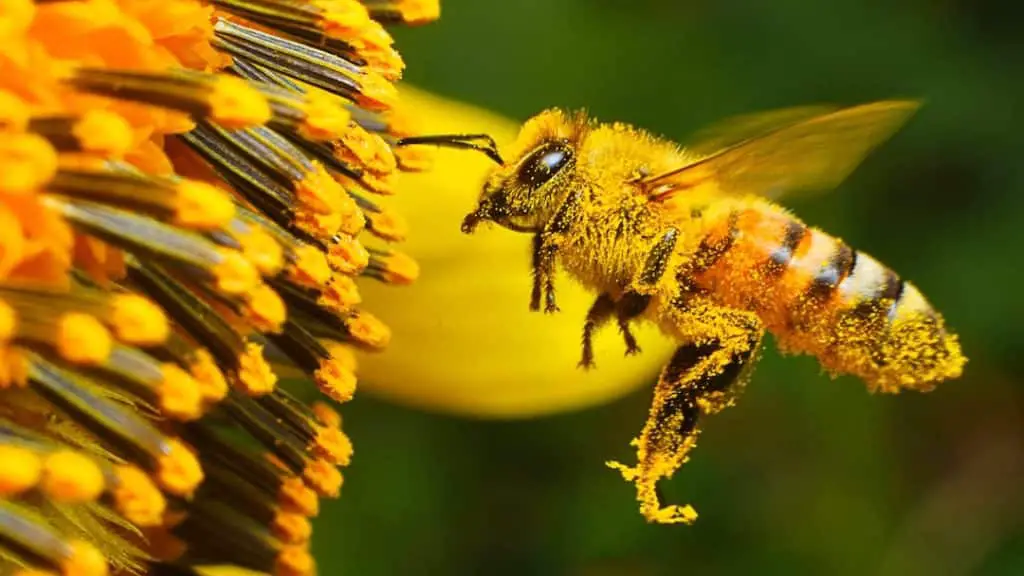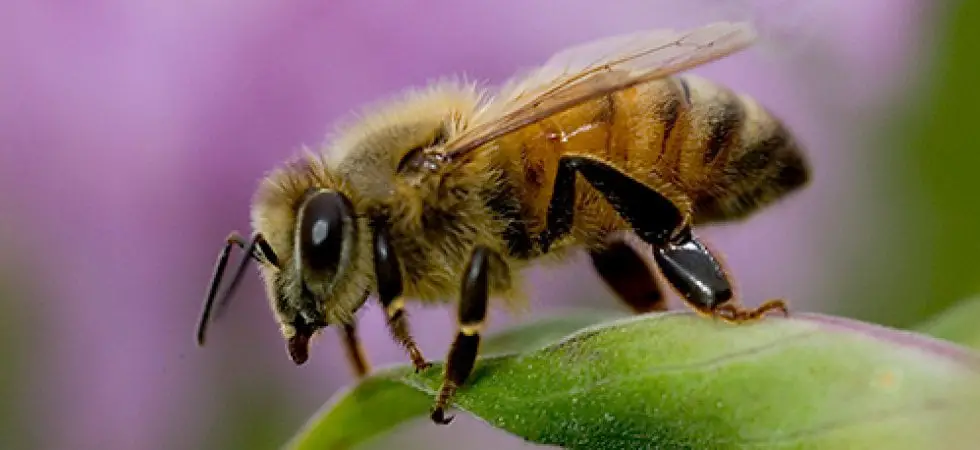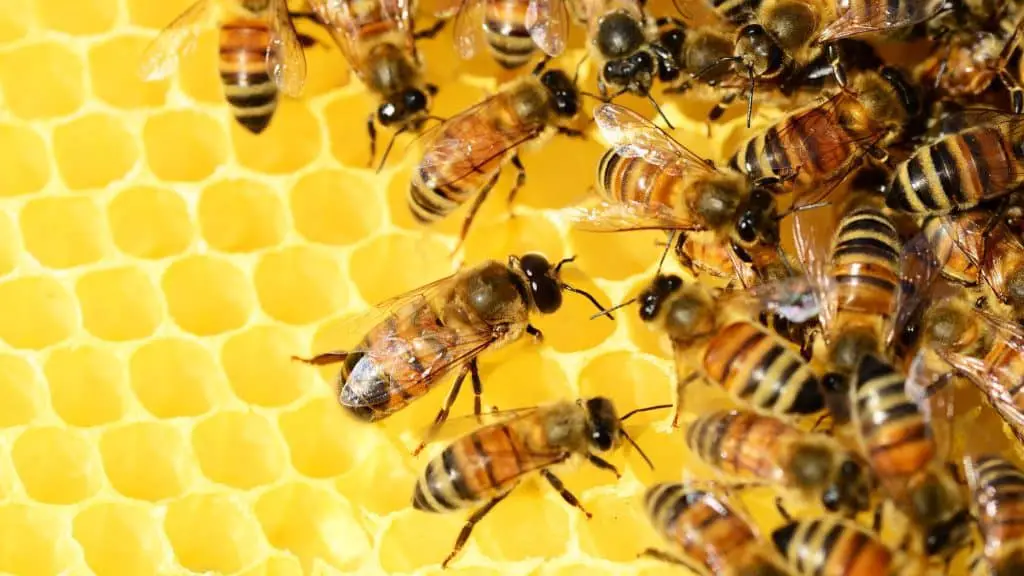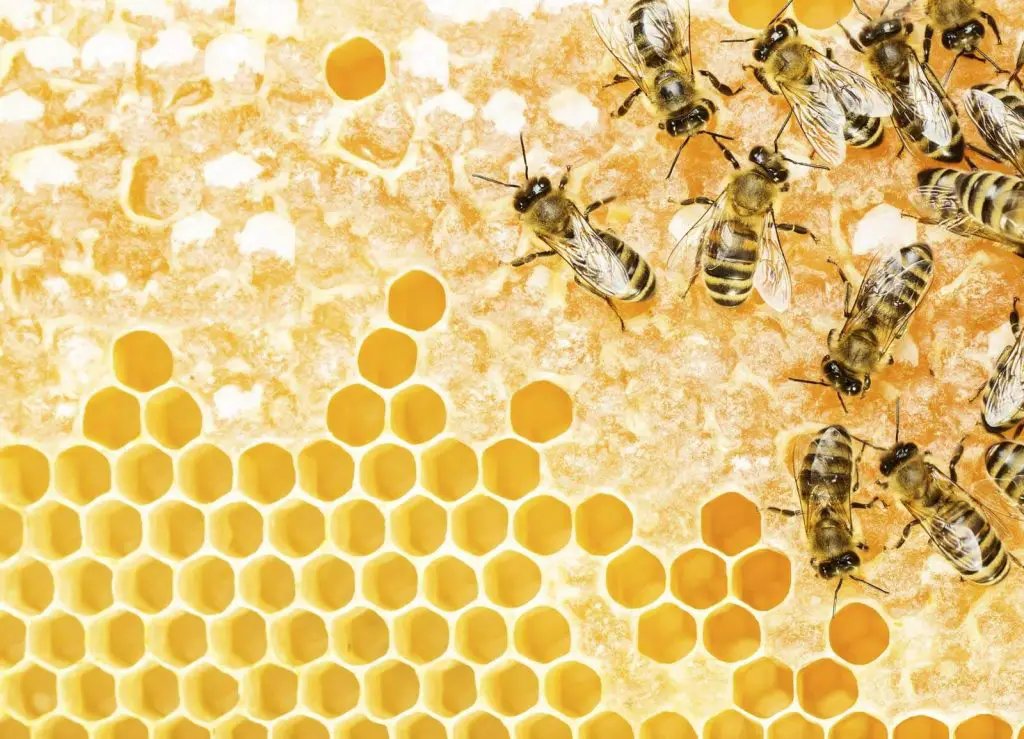Curtin researchers have revealed how behavioral and ecological factors influence the quality of bee venom, a product widely known for its effective treatment of degenerative and infectious diseases such as Parkinson and osteoarthritis.
The importance of protein diversity in bee venom
The study, published on PLOS analyzed – for the first time – the protein diversity in venom produced by the western honey bee in the Marri ecosystem in southwestern Australia.
Lead researcher Dr Daniela Scaccabarozzi, from Curtin's School of Molecular and Life Sciences and a research consultant at the ChemCentre, said the research would be of substantial benefit to both human health and the lucrative business of beekeeping, where the poison produced by the bee is sold for up to $300 per gram.
“We found that there are 99 proteins in the venom produced by the bee, of which about a third had previously been identified. The more proteins found in the venom, the higher the quality and potential effect,” said Dr. Scaccabarozzi.
“To understand the protein diversity of bee venom and find out which factors had an impact on this, the multidisciplinary research team looked at a number of factors, including the bees' behavioral patterns.
“A compelling behavioral factor was revealed by the association between docile and active bees. Interestingly, we found that “angry bees” that reacted intensely to our stimulation devices produced richer, more protein-dense venom.
“The overall amount of venom released depends on the secretion of alarm pheromones which causes other bees to react aggressively by stinging. This could be the result of genetic changes that can cause aggression in the bee.”

Dr Scaccabarozzi said the team also confirmed that temperature influenced the protein composition of the venom produced by the bee.
“High temperatures can be harmful to bee activity inside and outside the colonies. Of the 25 hives tested, we found that sites with higher temperatures had lower venom production,” said Dr Scaccabarozzi.
“This met our expectations that seasonal factors cause a change in the protein profile of the venom produced by the bee. The optimal range for high protein diversity is 33 to 36°C (91 to 97°F).”
Further findings also revealed that geographic location had an impact on the composition of the venom produced by the bee, as well as the stage the flowers were at during the harvest when they were consumed by the bees.
Dr Scaccabarozzi said further research would help beekeepers collect a standardized quality of venom to meet growing demand in clinical and therapeutic fields, as well as help design cost-effective strategies for harvesting bee-produced venom to ensure their own position in the global market.
Poison produced by the honey bee (Apis Mellifera Ligustica) was collected during the flowering season of Corymbia Calophylla (Marri) from 25 beehives near Harvey, southwestern Australia.
The benefits of bee venom
The venom produced by the bee has traditionally been used to treat inflammatory diseases such as rheumatism. However, bee venom is also known to be used as an adjunct in the treatment of neurological disorders, asthma, and infectious diseases such as malaria.
There are limited research evaluations of the use of bee-produced venom in veterinary medicine. In contrast, many published studies have addressed its potential application in human medicine.
In light of this last consideration, this study aims to summarize published research on the potential application of the venom produced by bees in animal therapies.
The venom produced by the bee is produced by the poisonous gland located in the abdominal cavity of female bees. The gland is connected to a containment sac. The venom apparatus of social insects belonging to the Apis genus constitutes an essential defense mechanism.
The bees sting near the apiary in defense of the colony. The queen, on the other hand, stings to kill her rivals.

Each hive can only have one queen, and when multiple queens are born at the same time, some of them escape together with a specific number of bees, a born queen kills the unborn queens that are still in their cell, or two queens engage in a deadly battle.
The protein concentration of queen bee venom is highest in the first (0-3) days of life and declines after 7 days (a condition necessary soon after emergence to kill the older queen and twin queens competing for dominance of the hive). As the gland degenerates, the protein content of the bee venom decreases over the next few days.
In contrast, in female bees the venom is not detectable at the time of emergence. Instead, it increases rapidly in the following two days, remains constant for the first 14 days and then decreases. Therefore, older ones produce less poison than younger ones.
The composition of the venom changes over time with age. For example, melittin is released in an inactive precursor form, which transforms into an active form with growth and the transition to the gatekeeper stage, which occurs around the 20th day of age.
Honey bees have a pointed stinger that is pulled out of the abdomen during the sting along with the venom sac. Unlike wasps and hornets, they can only sting once before dying.
When a bee stings a person or a mammal in general, the stinger remains embedded in the skin and the bee dies because its intestines, muscles and nerve center are torn in an attempt to detach itself. The bee dies because a large part of its body has been lost. The pointed end of the stinger is equipped with tiny hooks that prevent it from being removed without damage.
Once incorporated, it uses a separate piston mechanism to push the venom into the wound. The stinger self-incorporates into the tissue and there is a simultaneous release of the contents of the venom sac, which is usually completely expelled within a few minutes.

Furthermore, the pheromone alarm message transmitted by the venom produced by the bee activates other bees to defend the hive. The alarm pheromone is made up of the 2-heptanone molecule of the mandibular gland and other substances, such as isopentyl acetate, released by the gland connected to the stinging apparatus.
The venom produced by the bee causes localized inflammation with symptoms such as pain, heat and itching up to systemic allergic reactions which can end in anaphylactic shock and, in extreme cases of hypersensitivity, can be fatal. In popular culture, bee venom is often linked to these phenomena. However, it is one of the most priceless gifts the hive has given us.
It can be useful in treating a wide range of diseases when used in small doses. Its use in the treatment of many disease states is intriguing due to its complex composition of chemicals with significant pharmacological and biochemical activity.
Freshly secreted bee venom is a clear, colorless liquid that forms a light yellow powder when it dries. It has the pungent and aromatic smell of honey and is acidic (between 4.5 and 5.5). The water content in bee venom varies between 55 and 70%.
The active components of the venom of various Hymenoptera are peptides, proteins, enzymes, low molecular weight substances and aliphatic constituents in variable quantities. No exemptions apply to bee venom. It is a very complicated composition that is largely (80%) made up of proteins. The latter compounds have high (proteins) or low (peptides) molecular weights.

Biogenic amines are the most important low molecular weight substances. The peptides contained in bee venom, adolapine, melittin, apamin and peptide 401, have undergone extensive research.
Proper harvesting is the crucial element in obtaining the best quality bee venom. Pollen, honey and other colony products must be free of impurities. As Krell points out, there are no official quality standards, as bee venom is not recognized as an official drug or food.
A quantitative study of its most stable or easily quantifiable components, such as melittin, dopamine, histamine, norepinephrine or those for which contamination is suspected, can be used to determine the degree of purity of a substance.
Standardization and quality control techniques for the efficacy and purity of hymenopteran venom, particularly bee venom, were discussed by Guralnick et al. in 1986.
#Angry #bees #produce #venom #effective #neurodegenerative #diseases